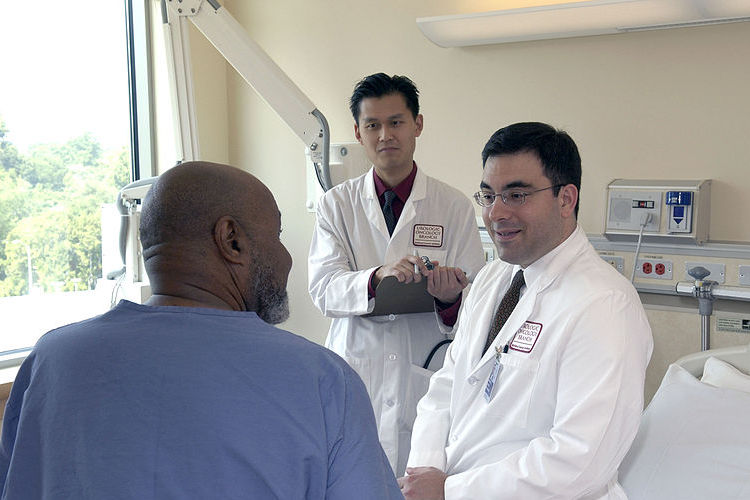These Methods Can Help You Manage Your Tolerance For Physical Pain
Pain. No matter the source—from a sports injury to simply sleeping in a weird position—pain can be a scary thing to deal with. It can even be downright intimidating if you’re not mentally or emotionally prepared for it. The shock and alarm of sudden or growing pain can make it even worse. But who really prepares for pain, apart from those who deal with chronic pain on a daily basis?
Well, actually, you can prepare for pain. No, you don’t need to live your life expecting to be in physical pain, but you can be better prepared for how to deal with it. Here’s how…

Laughter Might Be The Best Medicine
Have you ever heard of Humor Therapy? Humor Therapy uses the power of laughter and joy to speed healing and even ease pain. It might sound laughable (get it?), but there’s plenty of research to back it up. A series of exploratory studies by the Royal Society has begun to link laughter to a higher pain tolerance.
While these studies aren’t conclusive yet, the idea is simple: laughter can trigger the release of endorphins, and those endorphins can help ease pain. According to the studies by the Royal Society, the best kind of laughter for pain tolerance is social laughter. So, if you’re feeling more aches and pains than usual, it might be time to gather your friends around—or call them or video chat if you can’t get out—and let the good times roll.

Think About Something Else
How many times have you heard someone say “just try to think about something else?” The fact is, though, that distraction techniques like relaxation and visualization can go a long way to helping you tolerate pain.
There’s even a pain management system called Mind Body Therapy that uses treatments that involve your mind’s ability to control some symptoms of pain through visualization.
Now, you might want to roll your eyes when you hear terms like “visualization,” but—while it’s definitely not a cure-all—many patients have seen some good results from visualization. One woman in the UK even says visualization helped ease her chronic thumb pain.
Many doctors will also suggest using simple breathing exercises to relax and work through the pain, like the 8-8-8 Breathing Technique:
- Breathe in for 8 counts
- Hold your breath for 8 counts (optional)
- Breathe out for 8 counts
- Repeat 8 times
This method is touted as a great way to ease tension in the body, improving the flow of oxygen-rich blood to your tissues and slowing down the response time of the pain receptors in your brain.
So, the next time you’re in pain, give visualization or breathing techniques a try, especially if you’re waiting to see your doctor.

Understand Your Pain
Just like anything else, physical pain gets filtered through your mind. Unfortunately, that also means you can overthink it. And you know what overthinking can do, right?
It can lead to anxiety or even fear and the overwhelming questions that come with it:
- What if it doesn’t go away?
- What do I do if it gets too bad?
- How will I know if it’s “bad enough” to see someone?
- What if the pain gets worse?
In many cases, the anticipation and dread can be just as bad—if not worse—than the actual pain itself. If you’re feeling anxious or fearful about your pain, your best defense is to find out as much information about it as you can.
To really begin to understand your pain, you need to figure out exactly how much pain you’re in. Here are a few questions you can ask yourself to assess your pain:
- How much is it encroaching on your daily routine?
- Are you doing anything that might be making it worse? (Overthinking, for example…)
- Have you felt this pain before?
- Do you have any conditions that you’re aware of that are associated with pain?
- If someone else told you about your pain, would you tell them to get help?
Sometimes, pain is a natural part of healing—especially if you’re recovering from a surgery or other medical procedure. Essentially, it’s your body’s way of letting you know that something out of the ordinary is going on or that you need to take it easy. If you’ve broken your leg, healing is painful, but it keeps you from trying to walk on it.
Often, the fear of pain can be eased simply by educating yourself about it. The more you know about your pain, the more “at ease” with it you’ll be. Take care, though, when searching the web for answers. There is a lot of information out there, and not all of it will be true for you and your pain.

It Takes Time
Physical pain can be draining in a lot of ways. Not only is it overwhelming but it can also rob you of hope and even leave you feeling like a shell of yourself. Remember: your body is resilient, intuitive, and has the incredible power to heal itself.
But, there is a caveat: it takes time.
Now, that’s not to say that all pain can ultimately be healed by your body alone. Neither will these methods make your pain a breeze to deal with. They can, though, make physical pain a little more bearable and keep that little ray of hope alive that, one day, your pain could be healed.
